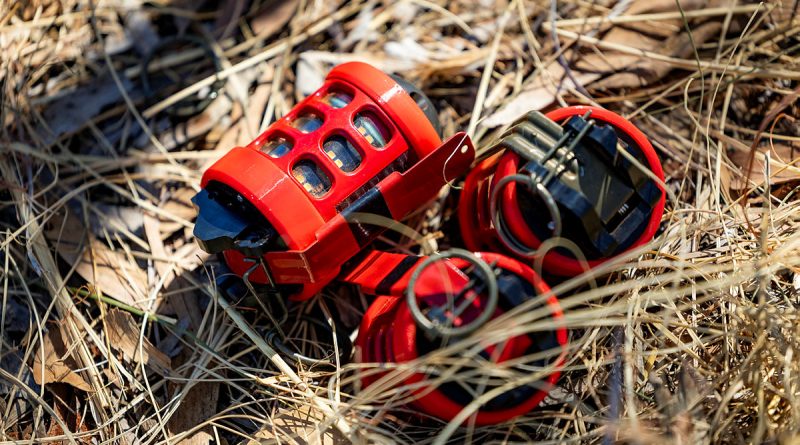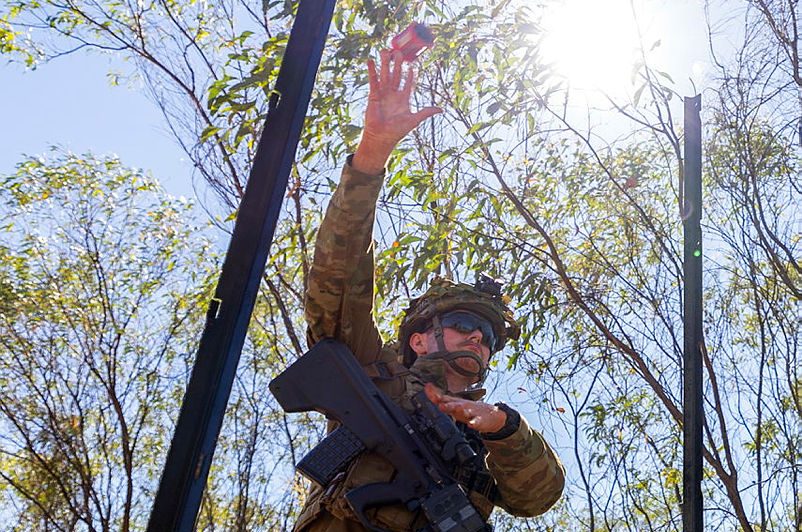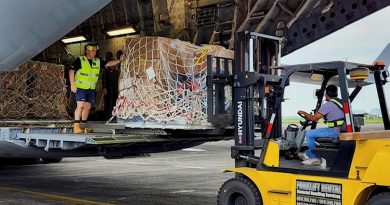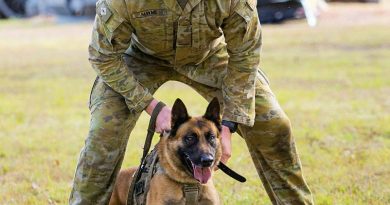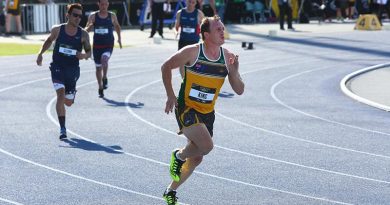Beep not bang for training-grenade concept

Corporal Jake Bostock was a training corporal at Combat Cell 8th/9th Battalion, the Royal Australian Regiment, in late 2021 when he identified the need for a safe alternative to the in-service F1 and F3 grenades – but something that would still offer training realism.
CAPTION: Royal Australian Air Force aviators from 2 Security Forces Squadron used electronic grenade simulators developed by Australian Army soldiers from 8th/9th Battalion, Royal Australian Regiment, for a training activity at RAAF Base Curtin in Western Australia. Photos by Corporal Lisa Sherman.
“I was keen to develop a device that offered a better replicable and repeatable training outcome that didn’t rely on using the high-risk ‘real’ thing,” Corporal Bostock said.
His answer was the electronic grenade simulator (EGS), which would have a similar size, weight and user interface as the explosive fragmentation grenade, and use electronics to emit noise and light to represent detonation.
In seeking to build and test his idea, Corporal Bostock was introduced to the Edgy Air Force Lab.
He created the first EGS designs in the lab a few days before participating in an Edgy Air Force Program pitch event in Canberra. He was successful and awarded $10,000, along with access to the program’s resources to further develop his concept.
Through the program, Corporal Bostock was introduced to Australian companies that helped him develop prototypes.
Several versions and 18 months later, a design was created that resembles what is now in use.
“The current version of the EGS has a safe sound level, rechargeable batteries and is water resistant. It has a four-and-a-half to five-and-a-half second delay like the F1 before it lights up and beeps so the user knows that it has successfully been operated,” Corporal Bostock said.
In addition to designing a product that functioned as intended, handling of the EGS also had to meet Defence policy on security and safety.
“One of the biggest issues we had throughout the project was finding policies around developing these types of training aids,” Corporal Bostock said.
So far, almost 100 EGS have been produced across multiple ‘Block’ variants, with each an improvement on the previous. The most recent Block 1.1 version was introduced across the ADF in July and used in exercises and courses.
Flight Lieutenant David Downham, of 2 Security Forces Squadron (2SECFOR), was a key collaborator who supported the introduction of the EGS into service.
“Within days of receiving 60 units of EGS version Block 1.1, we trained using them alongside Army 13th Brigade soldiers during Exercise Austral Shield at RAAF Curtin,” Flight Lieutenant Downham said.
“The training effect has been obvious with many 2SECFOR members demonstrating improved confidence and competence with grenade operation.”
Air Force has shared the EGS with a number of Army units for testing and evaluation.
CAPTION: Air Force aviator from No. 2 Security Forces Squadron conducts training using the electronic grenade simulator.
Lieutenant Colonel Robert Tot, of Edgy Air Force, said Edgy was committed to quickly getting the EGS to Defence personnel.
“This helps our people to be better-prepared warfighters using the EGS today, even while we work to develop the next, even more effective version,” he said.
Director of Preparedness Innovation and Edgy Air Force Program lead Wing Commander Kylie Cimen said a hallmark of the program was its approach to innovation across Defence.
“The successful and fast introduction of EGS into the hands of users demonstrates the strength of having an integrated team and taking a collaborative approach,” Wing Commander Cimen said.
“I am proud that Air Force has taken the lead on a land combat-related innovation as it shows the shift of thinking needed to support the integrated force. We have very good support from Army around developing the EGS further, and we’re keen to support Army to integrate EGS into their land combat training units when they are ready.”
While the EGS continues to be rolled out, ongoing design with Army is likely until late 2024.
“In time, EGS may have greater uptake by Army and they may take the lessons learnt from Air Force to ensure EGS gets into the hands of soldiers fast,” Wing Commander Cimen said.
“EGS is but one good idea that has a direct impact on improving Defence preparedness and mission success.”
.
.

.
.

